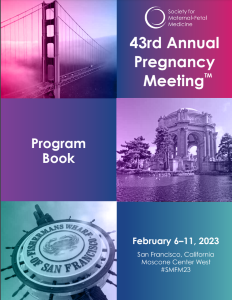Category: Intrapartum Fetal Assessment
Poster Session III
(722) Admission cardiotocography in low-risk pregnancies and neonatal outcomes, the significance of undetected small-for-gestational age fetuses
To assess the association between undetected small-for-gestational age (SGA) fetuses and abnormal admission cardiotocograph (admCTG) in a low-risk population. To elucidate the risk for neonatal and obstetric distress in this group – undetected SGA fetuses with abnormal admCTG compared to non-SGA fetuses with normal admCTG.
Study Design:
A population-based cohort study including singleton pregnancies from the Stockholm-Gotland Obstetric cohort, Sweden, between February 1st 2012 and June 15th 2020. Elective cesarean deliveries, induction of labor, non-vertex presentation, and preterm births ( < 34 weeks) were excluded. Pregnancies were designated as high- or low-risk at time of admission to labor ward, based on pre-defined risk measures (e.g. maternal morbidity, pregnancy complications, identified fetal growth restriction). SGA was defined as birthweight < 10th percentile and < 3rd percentile for gestational age. Outcomes for neonates born < 6 hours after admission were assessed regarding composite severe neonatal outcome (Apgar < 4 at 5 min, HIE grade 2-3, neonatal seizures, neonatal death) as main outcome. Composite moderate neonatal outcome was defined as Apgar < 7 at 5 min, ua-pH < 7.0, ua-pH < 7.05 and BD ≥ 12 mmol/L, advanced neonatal resuscitation.
Results:
We included 127 461 women assessed as low risk at admission to labor ward. The incidence of abnormal admCTG was 4.9%. The proportion of SGA was higher in the abnormal admCTG group compared to the normal, SGA 10th percentile, 18.6% vs 9.7% (OR 2.1, 95% CI 1.9-2.3), SGA 3rd percentile, 6.5% vs 2.2% (OR 3.1, 95% CI 2.7-3.5). The risk of composites severe and moderate adverse neonatal outcome was higher among neonates with abnormal admCTG born SGA (10th percentile) compared to normal admCTG, non-SGA; 1.2% vs 0.05%, OR 28.2 (95% CI 11.9-66.5) and 6.6% vs 1.0%, OR 6.5 (95% CI 4.6-9.3), respectively.
Conclusion:
In this low-risk population, where known FGR were excluded, there was a non-negligible group of undetected SGA fetuses, who were more prone to present with abnormal admCTG with substantially higher risk of severe and moderate neonatal outcome.

Erika Gyllencreutz, MD, PhD
Karolinska Institutet
Ostersund, Jamtlands Lan, Sweden- IH
Ingela Hulthén Varli, PhD
Karolinska Institutet
Solna, Sweden, Sweden - KJ
Kari Johansson, PhD
Karolinska Institutet, Stockholms Lan, Sweden
- PL
Pelle Lindqvist, PhD
Karolinska Institutet
Solna, Sweden, Sweden - MH
Malin Holzmann, PhD
Karolinska Institutet
Solna, Sweden, Sweden

.png)
